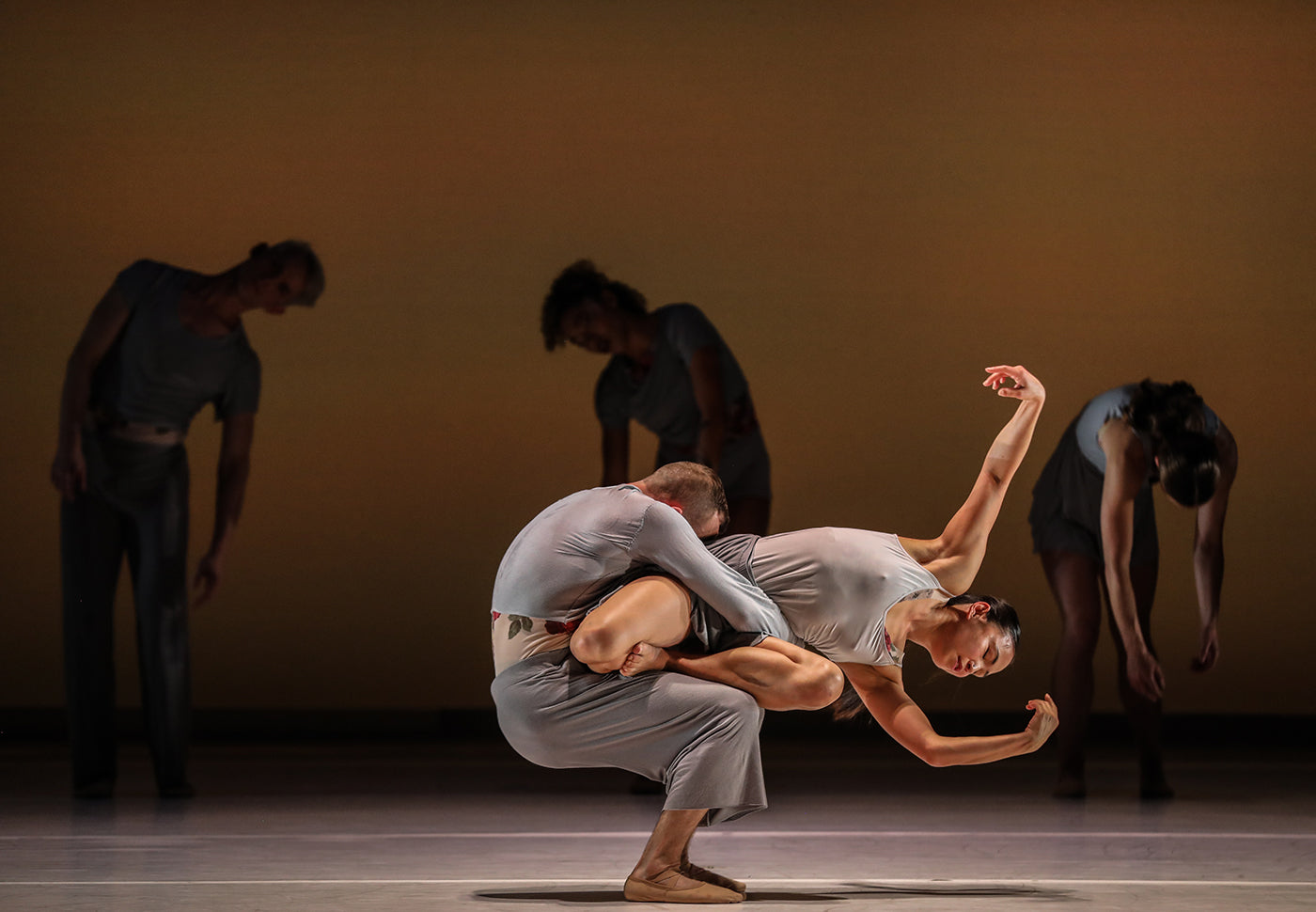Set to Ravel’s Spanish-flavored score, “Boléro” by Béjart is a 20th -century hit, an audience favorite here and there. A modern take on a Nijinska cliché of gypsy Spain, it consists of repetitive, alluring gestures in an extended solo, cleverly responding to the music pattern. A woman undulates in a crescendo on a red round table, surrounded by 40 shirtless men; from intimate movements to an evocative mass climax as the musical tension builds up. In 1961, the year it premiered, Béjart’s “Boléro” might have been quite innovative but today, in the wake of the #MeToo campaign, one might feel slightly uneasy at the view of a female sex-object displayed on a scarlet table, dancing with erotic energy for a masculine, aroused, crowd. The scene is somehow reminiscent of the dance of Salomé, a biblical icon of dangerous female seductiveness. “Boléro” has an alternate all-male cast, though an all-women version is not on the agenda for now.
Apart from sensual provocation, Béjart’s “Boléro” evokes bullfighting (corrida), where humans and animals crudely dance to death against one another. Red and black colors indeed suggest a tragic association: blood and death. Surprisingly, Gillot, once called a ‘thoroughbred’ for her authoritative, unpredictable artistry and athletic lines showed up wounded in the bullring. As she was supposed to raise her arms in a half-lascivious, half-aggressive manner, she appeared to mime a Dying Swan’s worn-out wings. Although it lacked the flamboyant emphasis that is the ballet’s trademark, Gillot’s interpretation had tremendous depth because it spoke to the audience as an allegory of an early twilight of the idols, as the 42-year-old Étoile is about to retire. Has she suddenly become an albatross, weighed down by its giant wings as portrayed in Baudelaire’s poem? Don’t be fooled too soon, guys, because Marie-Agnès Gillot is too big to fail.
Dying too is Benjamin Millepied’s American spirit in the company. “Boléro” was combined with “Daphnis et Chloé,” choreographed by Millepied in 2014, before he took the short-lived position of artistic director. Back then, the creation was lauded by the critics but now it seems that the champagne no longer sparkles on stage. The choreography, neo-classically fluid with little style, is barely inventive and the dancers, whom he showcased as a blooming “Millepied generation,” looked a bit lost in translation.
The double bill dedicated to Ravel was designed for contrast: vaporous lines bathed the audience in a stylized evocation of pastoral Greece before Béjart’s raw apotheosis. Except for the nymphs’ scene—a reminiscence of Balanchine’s “Serenade,” shrouded in opalescent light—and the ever-flowing movements of the choreography, there’s not much pastoralism left from Fokine’s creation. Fond of plotless ballets, he took a nonliteral approach to the ancient tale. Sadly, what it gains in visual clarity, it lacks in narrative consistency. Abstraction in dance isn’t easy to master. The scenography is of little help there: Daniel Buren, a much-praised artist, didn’t step out of his comfort zone, monetizing his famous black-and-white stripes signature and color-infused geometric forms. Costumes confuse trendy minimalism with just-got-out-of-bed look. What is crystal clear is that white represents good, black evil, and bright colors happy ending. Therefore, the pirates—lead by local star François Alu—come as a relief to abduct Chloé (a willowy Dorothée Gilbert) away from Daphnis (nonchalant Mathieu Ganio). The corps de ballet was cut down to its bare minimum, allowing half soloists to shine, like Eleonore Guérineau, a born principal, who dances with luxurious phrasing.
The ending is anticlimactic, to say the least, as the lovers’ reunion almost goes unnoticed. At 50 minutes, it proved an overlong meal; a 25-minute ballet would have been a tastier appetizer to Béjart and Gillot’s feast. Most delightful was to listening to Ravel’s majestic score, from the wordless chorus to final symphonic gusts.









comments